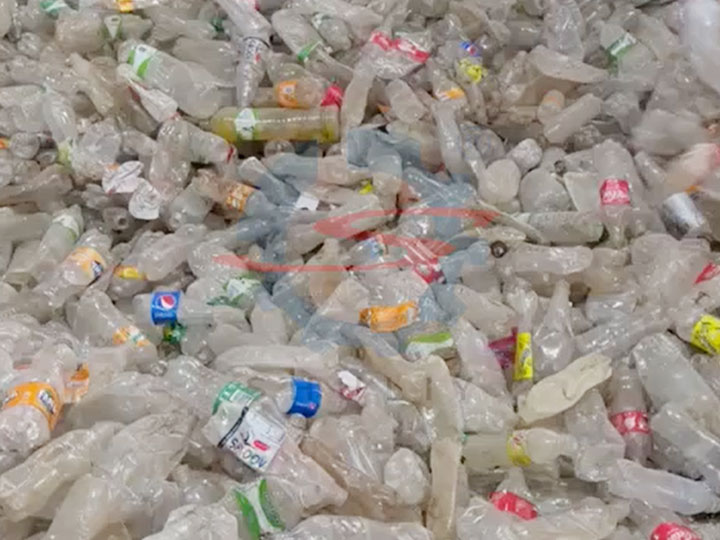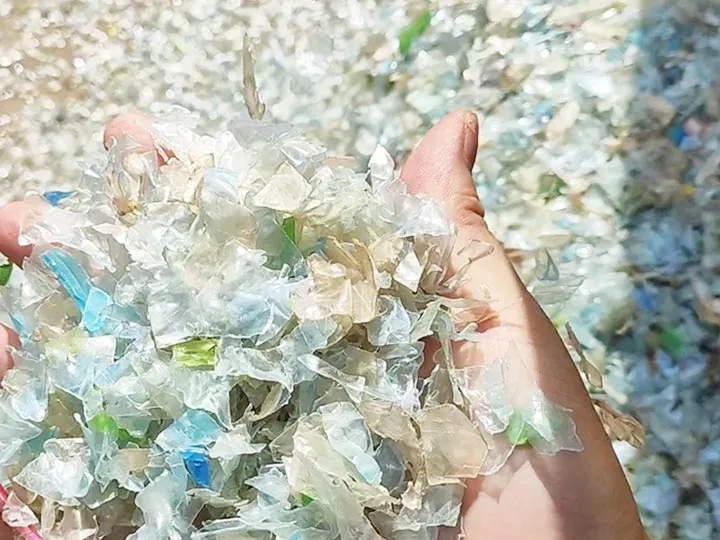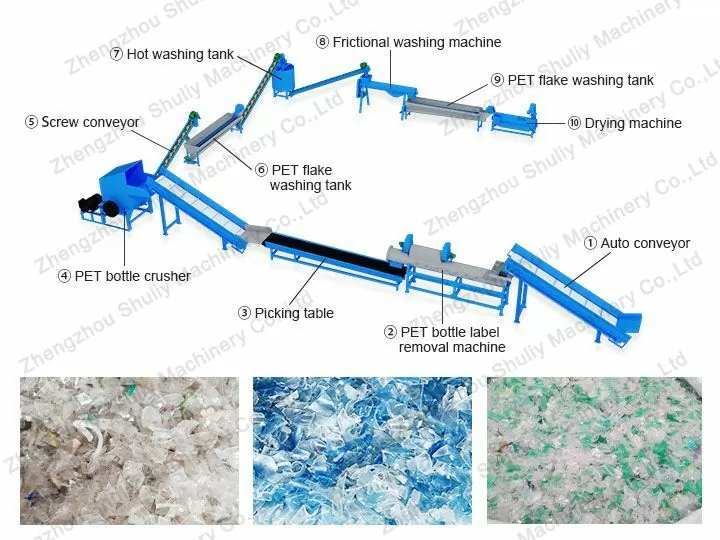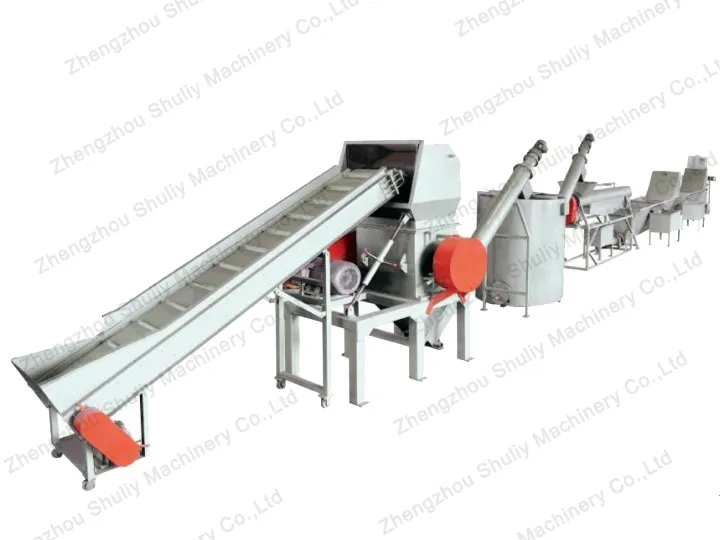PET bottle recycling line is a process of recycling plastic bottles into recycled plastic bottle flakes after crushing and cleaning. Look at the ground level of the plastic bottles and you may see a triangular symbol, as well as the text PET, which tells us that these bottles can be recycled.
But do you know what PET plastic actually is and how the PET bottle recycling line works? Who receives these bottles and where do they go? Today, we’re going to share the process of recycling plastic bottles.
What Is PET Bottle Recycling?
PET bottle recycling is a critical environmental process aimed at reprocessing discarded PET (Polyethylene Terephthalate) bottles into reusable raw materials, reducing the demand for new plastics and lowering environmental impact. PET bottles are widely used in packaging for beverages, food, and personal care products, making their recycling of significant importance.


Working Process of PET Bottle Recycling Line
1, Collection and Sorting: The primary task is to collect discarded PET bottles from various sources, including household recycling, businesses, restaurants, and supermarkets. Once collected, PET bottles are sorted based on characteristics such as color, size, and material.
2, Crushing and Shredding: After sorting, PET bottles are sent through a crusher to be shredded into small granules. This step reduces the volume of the bottles, making them easier to handle.
3, Cleaning and Removal of Contaminants: The shredded PET particles are fed into a cleaning system. Here, they go through multiple washing stages to remove surface dirt, oil, labels, and other contaminants.
4, Drying: Cleaned PET particles need to be dried to reduce moisture content. This is a crucial step in ensuring the quality of the recycled flakes.
5, Quality control and testing: Quality control is an important part of a PET bottle recycling line. Recycled PET flakes are subjected to rigorous testing to ensure that their quality meets requirements. This includes testing for size, clarity, strength, and purity.
6, Packaging and distribution: Finally, by packaging the recycled bottle flakes and preparing them for sale. These recycled bottle flakes can then be sold to plastic product manufacturers for the production of new PET products.

What Happens to Bottles That Can’t Be Recycled?
Not all PET bottles can be successfully recycled. Some of these non-recyclable bottles may be disposed of in landfills, leading to a waste of resources and environmental problems. This highlights the importance of proper recycling and segregation, as well as PET bottle recycling lines, to minimize the amount of non-recyclable waste.
Current Status of Plastic Recycling
Plastic recycling is a global challenge, but it is also an area of continuous improvement. Governments and businesses are gradually focusing on plastic recycling and taking measures to encourage and enhance the recycling process. At the same time, the emergence of new technologies, such as PET bottle recycling lines and various plastics recycling machines, promises to increase recycling rates and reduce environmental impact.
If you would like to know more about recycling technology or plastic recycling solutions, please leave a message on our website.
